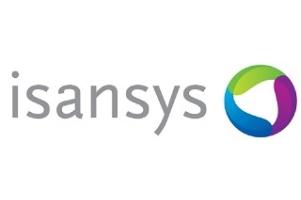Isansys Lifecare, a digital healthcare company, is reportedly seeing rapidly increasing global demand for its Patient Status Engine wireless patient monitoring platform, as it ships more systems to hospitals in India, Germany, Scotland and Norway.
The company’s second generation system, launched earlier this year, is now being used in new clinical work around the world. The technology is said to enhance the user experience and provides higher quality data for earlier detection of changes in patients’ conditions.
Healthcare providers can now analyse more patients’ data in real time, and using the inbuilt early warning scores can track the status of their patients at all times both in hospital and at home.
Demand for real-time continuous data, including personal health information, early warning scores, and alerting when a patient’s condition is deteriorating, is driving the market for complete monitoring systems in hospital and home care settings globally.
Isansys Lifecare, has announced that demand for its complete, scalable, Patient Status Engine platforms has exceeded expectations as it has shipped systems to Norway, Germany, Scotland and India and is currently processing more orders for systems elsewhere.
Installation, including integration with a provider’s IT system, has been designed to be simple and fast, usually completed within one day, thus allowing providers to deploy the system almost immediately and start collecting patient data. The objectives for each of the providers are to improve efficiencies and to provide accurate early warning indicators of adverse events without the additional labour costs associated with manual observations.
Dr Line Pedersen, working at Sorlandet Hospital Group, Norway where Isansys has just installed a number of systems, said, “This is an important project to improve patient safety. Through the use of the Isansys patient monitoring equipment across our hospital, I believe we can both reduce mortality and save money. We are looking forward to meeting our goal of delivering an exceptional patient care experience.”

Keith Errey, CEO of Isansys, added: “We are delighted to be deploying our systems to hospital and healthcare providers globally and that the value of this type of technology is now being recognised by people all around the world – the demand has completely surpassed our expectations. The PSE is an ideal match for a suite of healthcare solutions and will allow each of these countries to harness a wealth of new opportunities for improved clinical outcomes, reduced overall cost and increased revenues.
“Our scalable and low-cost technology and service models offer clear benefits that make them uniquely suitable for these vast markets. We hope that by installing our systems in these hospitals and communities we can empower them to provide enhanced levels of proactive care.
“Automatic data capture addresses a whole range of issues relating to the pressures on nurses and greatly improves in-ward efficiencies compared with manual methods, including manual electronic observation systems. From any point of view, including cost, the PSE is very much the future of patient monitoring.”
The PSE provides a complete end-to-end platform to continuously and wirelessly capture, collect, store and interpret vital sign and other physiological data. The Class IIA, CE-marked platform, uses the Lifetouch, Lifetemp and other unobtrusive wireless, wearable sensors to collect data directly from the patient.
The system analyses the ECG of every heartbeat to provide continuous heart rate, respiration rate, heart rate variability and other cardiac parameters such as arrhythmias, and uses other sensors for continuous oxygen saturation, PPG, blood pressure and temperature.
This rich ensemble of physiological data is analysed and simplified to allow doctors and nurses to monitor patients better, more closely, and more efficiently. It is clinically proven to assist in early detection of patient deterioration and helping to prevent adverse events.
The Patient Status Engine is both a medical device and a platform technology. The data that is collected can be used to address a range of clinical needs and is not focussed on any one condition or disease. For instance, each country where the PSE has been shipped is using the platform to focus on different patient care pathway.
In Germany, clinicians are focused on getting the patient out of hospital in the quickest time possible. This reduces the number of bed days for the patient and provides an opportunity for additional income for the hospital provider.

Clinicians in Scotland will use the PSE to look for asymptomatic atrial fibrillation in a long term screening trial and in a separate project, to monitor premature babies. The PSE is the only wireless monitoring system approved for paediatric use.
Isansys is working in India with a number of leading hospital groups to provide early warning scores and other quantitative measures to improve patient outcomes, reduce costs for patient-payers, increase revenues for providers and provide out of hospital care.
Rebecca Weir, cofounder and director of Business Development at Isansys, said: “We developed the PSE over the last six years by working closely with clinicians and nurses and listening to their issues and needs.
It is now really encouraging to see how much of a demand there is for the system, as clinicians and providers in many countries are recognising that these new data driven methods are now available for better clinical practice, improved patient care and efficiency gains across the whole healthcare delivery spectrum.”
Comment on this article below or via Twitter: @IoTNow_ OR @jcIoTnow










